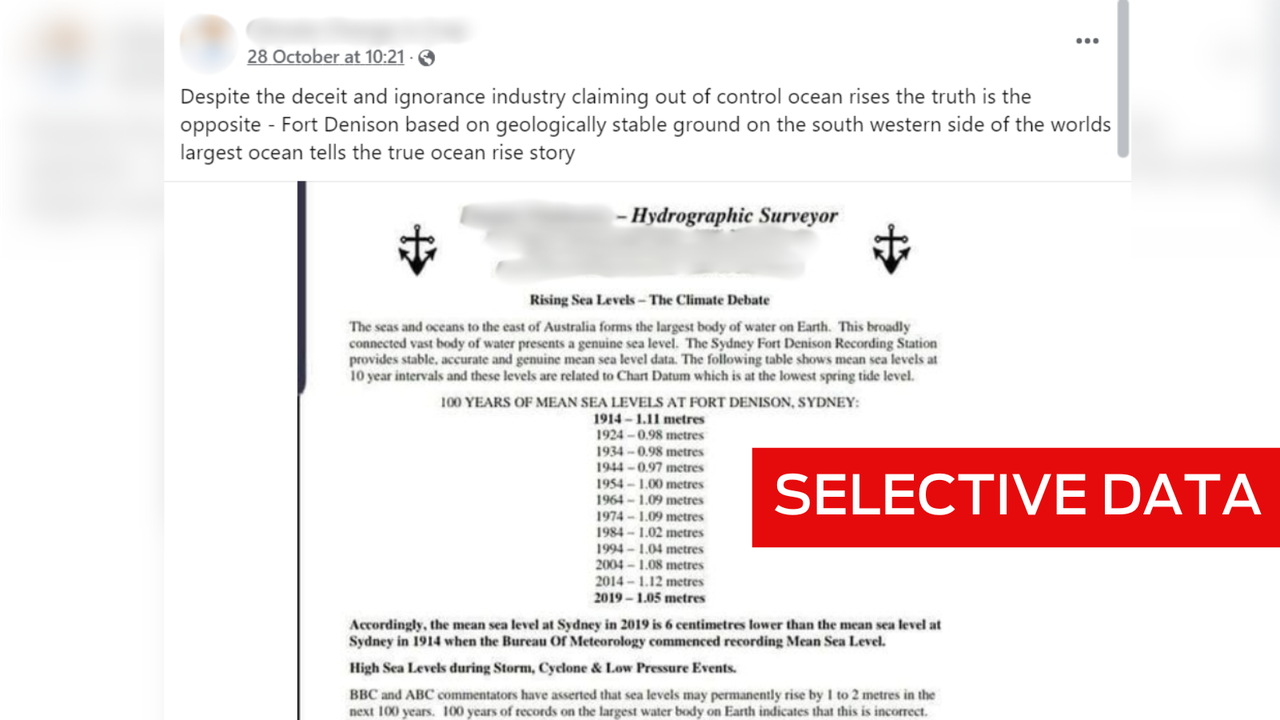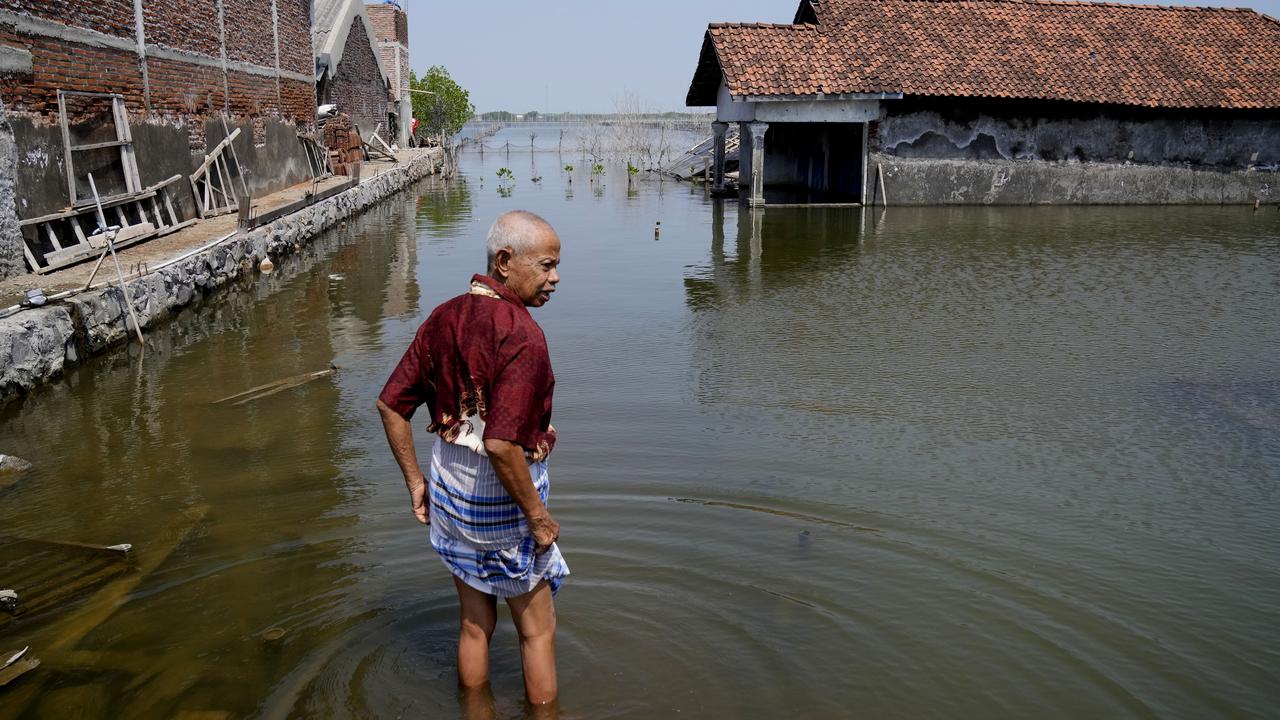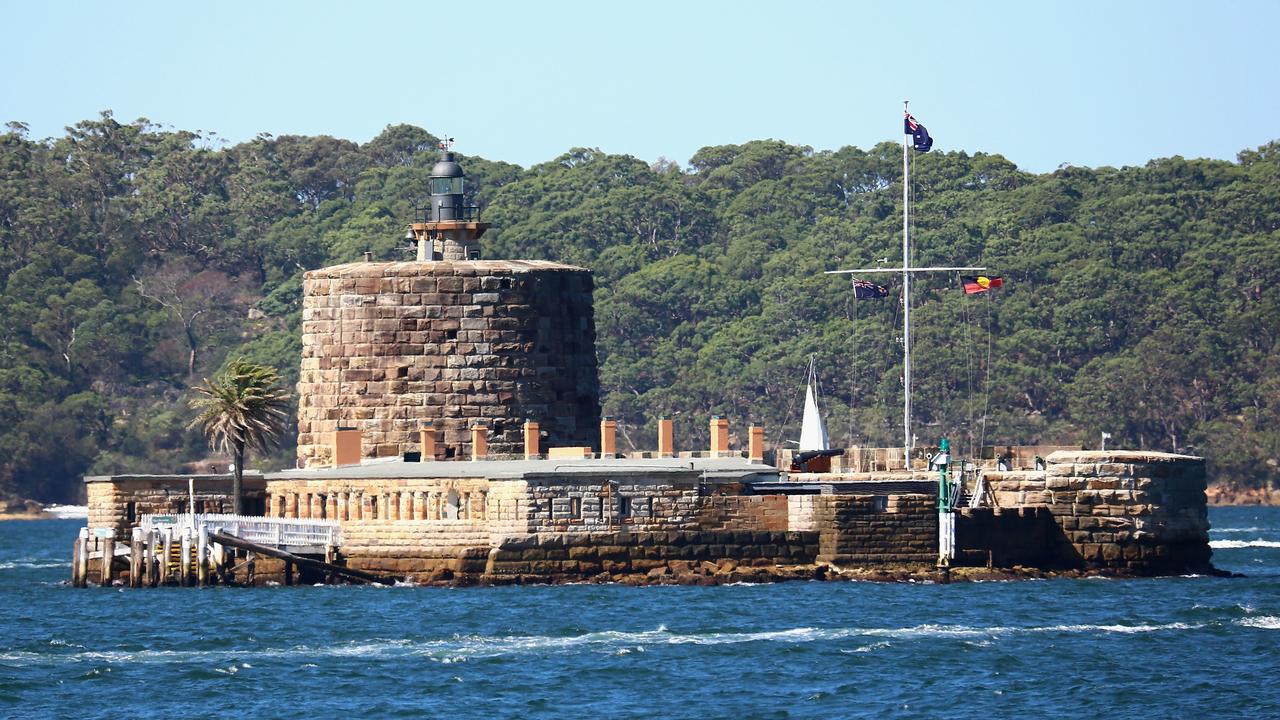WHAT WAS CLAIMED
Sydney’s 2019 annual mean sea level is six centimetres lower than in 1914.
OUR VERDICT
False. The data is presented incorrectly. Sydney’s 2019 annual mean sea level is about 8.1cm higher than in 1914.
AAP FACTCHECK - Selective use of sea level data is behind a false claim circulating online that Sydney Harbour's average sea level is 6cm lower than a century ago.
However, Bureau of Meteorology data shows the average annual sea level at Sydney's Fort Denison was about 8.1cm higher in 2019 than in 1914.
Other studies also show sea levels are rising near Sydney, and around the world.
Facebook posts making the claim share a photo of a report listing some sea level data from Fort Denison from 1914 to 2019.
The report claims the mean annual sea level in 1914 was 1.11 metres, and the mean level in 2019 was 1.05m.

"The mean sea level at Sydney in 2019 is 6 centimetres lower than the mean sea level at Sydney in 1914 when the Bureau of Meteorology commenced recording Mean Sea Level," the report states.
One post sharing the report has a caption which reads: "Despite the deceit and ignorance industry claiming out of control ocean rises the truth is the opposite."
However, Bureau of Meteorology data shows the annual mean sea level at Fort Denison in 1914 was 0.925 metres, while the figure for 2019 was 1.006m, which is 8.092cm higher.
The author of the report circulating online told AAP FactCheck that the data presented shows the highest monthly mean sea level recorded in the years noted.
AAP FactCheck found all but two of the figures quoted match the highest monthly average of the years mentioned, but regardless, they are not yearly average figures.
Emeritus Professor John Church, an oceanography expert at UNSW, said this presentation of the data was "misleading".
"If you want to show monthly means, then show all the data rather than selecting about one per cent of the data," he told AAP FactCheck.
He said looking at the full record of data is the only way to get an accurate picture of sea level changes, and that data shows sea levels are rising around Sydney.
A Bureau of Meteorology spokesperson told AAP FactCheck that the annual mean sea level had increased between 1914 and 2024, according to its own records.
The spokesperson noted that while rising sea levels means there are more above-average years, there are still below-average years too.
"Therefore, the bureau analyses long-term patterns using linear trends or other methods that consider all years of data, rather than simply computing the difference between the first and most recent observation," the spokesperson said.
The spokesperson added that research also shows sea levels in Sydney have risen, pointing to a 2014 study which estimated the trend at 0.98 millimetres per year between 1914 and 2010.

Prof Church said the sea level had been increasing slower in Sydney than the global trend because the land mass has been rising.
Increased atmospheric pressure over southeastern Australia from at least 1966 to 2010 would also have depressed local sea level rise, he added.
The Intergovernmental Panel on Climate Change states that the global mean sea level is rising.
According to a 2024 US study, the rate of global mean sea level rise has increased from around 2.1mm per year in 1993 to 4.5mm per year in 2023.
The UK's National Oceanography Centre also plots sea levels for multiple stations worldwide, including Fort Denison, with monthly averages clearly showing a rise there since 1914.
The Verdict
False – The claim is inaccurate.
AAP FactCheck is an accredited member of the International Fact-Checking Network. To keep up with our latest fact checks, follow us on Facebook, Twitter and Instagram.












